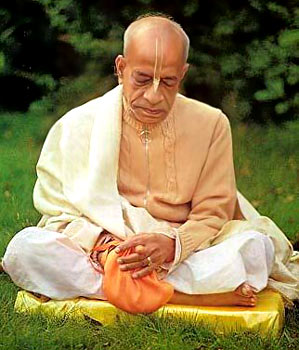 Japa, which comes hand in hand with meditation or Dhyana, can become monotonous after a prolonged practice. For this reason there are a variety of Japa in which the Mantra can be repeated verbally for sometime, in a whisper for sometime and mentally for some time.
Japa, which comes hand in hand with meditation or Dhyana, can become monotonous after a prolonged practice. For this reason there are a variety of Japa in which the Mantra can be repeated verbally for sometime, in a whisper for sometime and mentally for some time.
The mental repetition is very powerful and it is termed as Manasika Japa. The verbal or loud repetition is called Vaikhari Japa. Humming of Mantra or repeating it softly as if whispering is called Upamshu Japa. When one is starting the Upamshu Japa one should perform it aloud for a period of time so that the ears will hear the mantra and the brains will record it. Gradually one should decrease the volume and ultimately do it silently. This japa method is effective because the cerebral cortex will keep on reciting the mantras for a period of time even after the audible japa has stopped. However, the japa should be carried on uniformly and in sustained tones. Even the repetition of Japa without any feeling or Bhava has a purifying effect on the mind and body.
Another form of Japa is called Tantric Japa where the aspirant repeats the mantra for a prescribed number of times. After nine or ten repetitions or rather after completing the prescribed number of times, offerings of ghee or herbs are made to the fire. If the japa is done without any desire, it needs no such fire worship or Homa.
Religious philosophers advise to write down the Ishta Mantra or Guru Mantra for half an hour daily in the notebook. While writing the Mantra one should observe Mouna or silence. On Sundays and holidays it is advised that one should write this for one hour. This is called Likhita Japa and this helps in developing the concentration level in an individual.
The benefits of Likhita Japa cannot be sufficiently described. It purifies the heart and concentration of mind and also helps one to control Asana, Indriyas, particularly the sense of sight and taste. It fills one with the power of endurance and helps one to attain peace of mind. Mantra can be written in any language and by regularly practicing Japa the inherent power of Mantra (Mantra- Shakti) will stir up which will make one conscious of the Divinity in the Mantra.




















